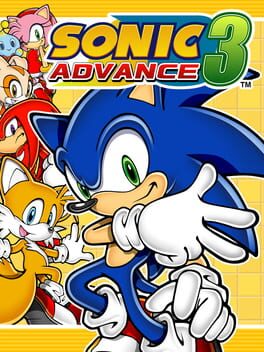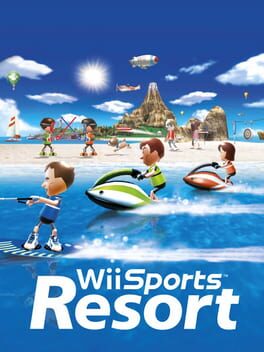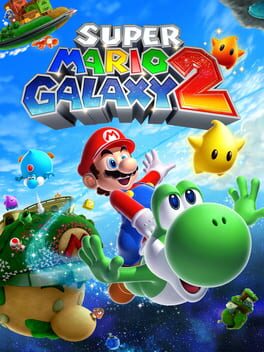H_sanForNow
Bio
Sentient capital H. Don't question it...
Sentient capital H. Don't question it...
Badges

Liked
Gained 10+ total review likes

N00b
Played 100+ games

GOTY '23
Participated in the 2023 Game of the Year Event
Favorite Games
107
Total Games Played
000
Played in 2024
002
Games Backloggd
Recently Reviewed See More
Having originally been planned as an expansion pack for the first game, Galaxy 2 is largely more of the same, albeit with some changes for the better.
Structurally, while there is a hub-world, it isn't nearly as elaborate as anything we've seen before. Interestingly, the means through which levels are accessed is a linear world map, which, considering the linear levels within these worlds, makes a lot more sense of the kind of game this is.
Galaxy 2 also does some work to remedy Galaxy 1's issue of multiple missions in a galaxy simply repeating content from other missions by having you play through the exact same gauntlet again with minor variations. That still exists here, but it's nowhere near as prominent.
Galaxy 2 could be described as a second draft of Galaxy 1, in terms of general design. It's mostly the same, just cleaned up somewhat.
Structurally, while there is a hub-world, it isn't nearly as elaborate as anything we've seen before. Interestingly, the means through which levels are accessed is a linear world map, which, considering the linear levels within these worlds, makes a lot more sense of the kind of game this is.
Galaxy 2 also does some work to remedy Galaxy 1's issue of multiple missions in a galaxy simply repeating content from other missions by having you play through the exact same gauntlet again with minor variations. That still exists here, but it's nowhere near as prominent.
Galaxy 2 could be described as a second draft of Galaxy 1, in terms of general design. It's mostly the same, just cleaned up somewhat.
Mario's repertoire of moves is seriously downsized compared to previous outings. That's not necessarily a bad thing, but when your competition is Mario 64 and Mario Sunshine, it's hard to say that was the right call. You could say that about a lot of things in this game. Mario Galaxy still takes structural cues from 64 in that you require collectables from levels to unlock new levels, but it follows Sunshine's structure as well of every level unlocking new levels in a linear sequence. This is simultaneously not as much and more of a problem than it was in Sunshine. And a lot of it comes down to the fact that Galaxy is a linear course-clear game, not a collectathon like its older siblings, despite its overarching progression structure. The end of levels just happen to be marked with a collectable.
It's more of a problem than in Sunshine because a lot of the multiple missions for each Galaxy involve you retreading a lot of the same ground you've already covered. It's less so in some cases however where sometimes missions take you to completely different places inaccessible in prior missions to where they may as well be whole new levels.
So Galaxy is a bit of a muddled game. It takes a lot of structural cues from very open-ended games while being a linear game itself. Of course, taking their structure, it's quite open outside of the context of a single galaxy, but the constant repetition of content to pad out its star count can get quite frustrating. The attempt to carry over the progression structure of its predecessors, with the hub-world and the star unlocks giving you plenty of choices in levels seems somewhat pointless considering the structure of each individual level. No longer is the hub-world a microcosm of the levels you'll be visiting, but something unlike them entirely, making for a stark disconnect which doesn't exist in prior titles.
Super Mario Galaxy has a bit of an identity crisis to say the least. The challenges it presents are generally well designed, but the repetition of content and the odd mixing and matching of different design philosophies does not do it any favours.
It's more of a problem than in Sunshine because a lot of the multiple missions for each Galaxy involve you retreading a lot of the same ground you've already covered. It's less so in some cases however where sometimes missions take you to completely different places inaccessible in prior missions to where they may as well be whole new levels.
So Galaxy is a bit of a muddled game. It takes a lot of structural cues from very open-ended games while being a linear game itself. Of course, taking their structure, it's quite open outside of the context of a single galaxy, but the constant repetition of content to pad out its star count can get quite frustrating. The attempt to carry over the progression structure of its predecessors, with the hub-world and the star unlocks giving you plenty of choices in levels seems somewhat pointless considering the structure of each individual level. No longer is the hub-world a microcosm of the levels you'll be visiting, but something unlike them entirely, making for a stark disconnect which doesn't exist in prior titles.
Super Mario Galaxy has a bit of an identity crisis to say the least. The challenges it presents are generally well designed, but the repetition of content and the odd mixing and matching of different design philosophies does not do it any favours.
Even more interesting movement mechanics than its predecessor, with mostly great levels to boot (if significantly fewer of them, unfortunately), but which seriously kicks itself in the foot by forcing the player to complete each stage's missions in a linear order, which severely undermines the point of why the levels in Mario 64 were designed to be open sandboxes in the first place. While the moment-to-moment gameplay is arguably more nuanced than 64, its structural problems and serious downsizing in scope relative to it kneecap it in comparison severely.







